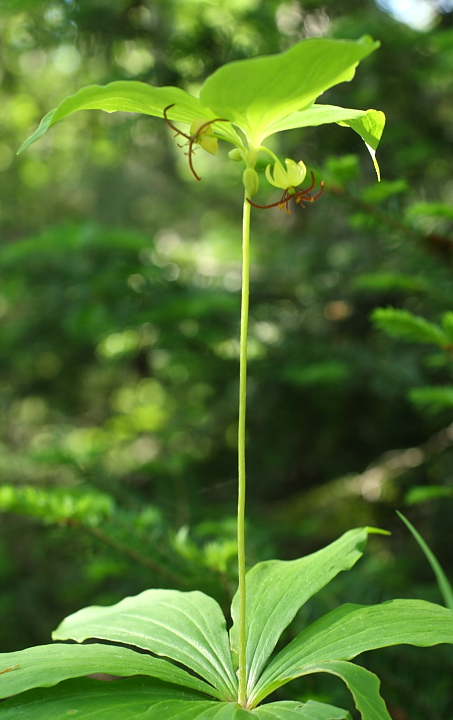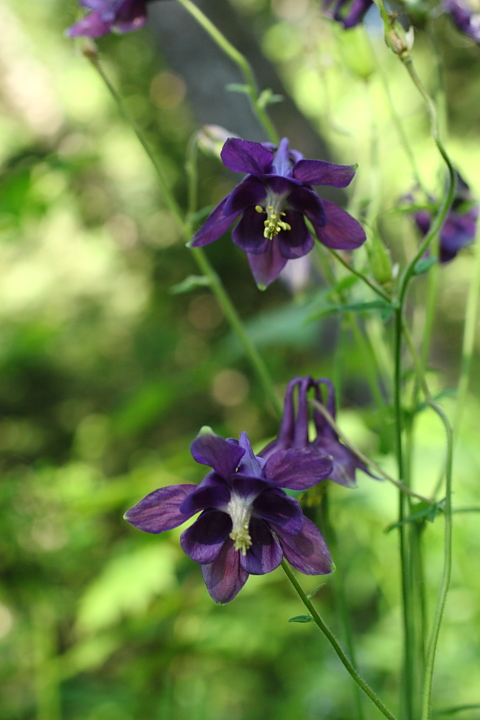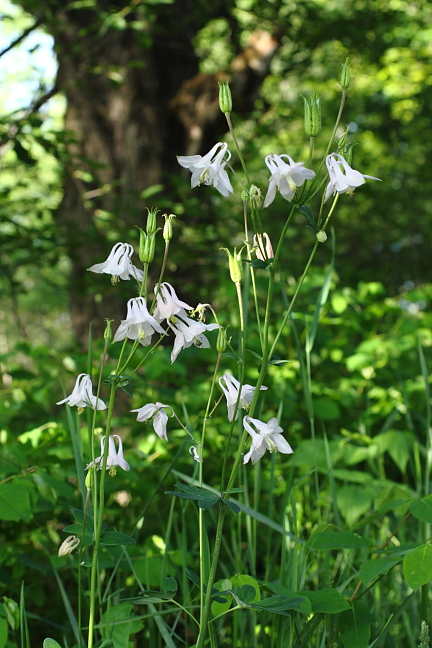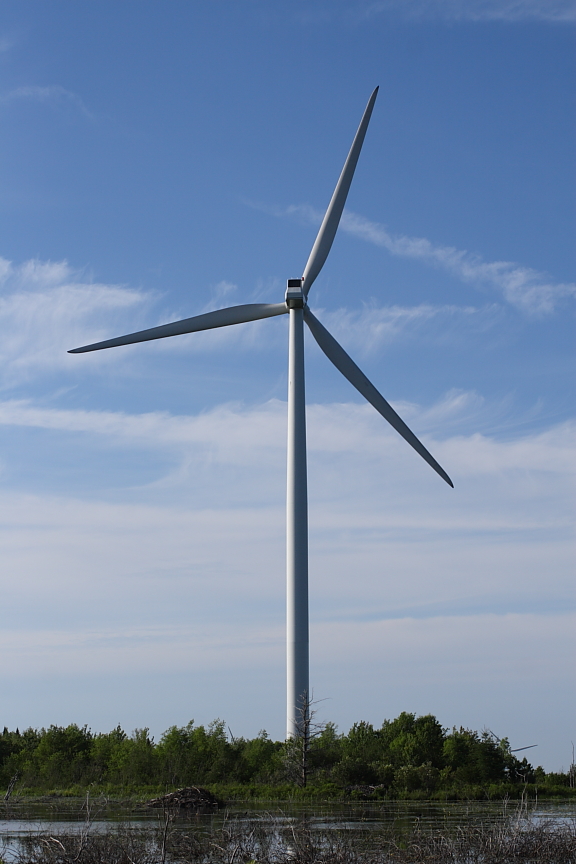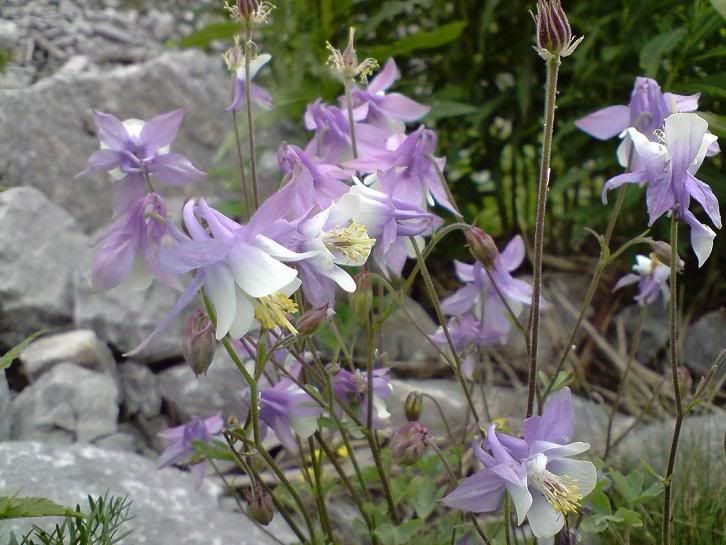last week I went up onto the tug hill region east of lake ontario after work to a spot where there have been lots of native orchids. I was hoping to find some large shining ladies tresses, bog candles showy ladyslippers and maybe even some early broad-lipped twayblades. I was surprised that along much of the dirt road heading into the area called 'parkers' on the state maps there were large flowering plants of columbine. I'd heard one of my co-workers talking about going north with another co-worker to take pictures of blue columbine a week or more before this, so didn't think they would still be around. There were many plants with dark blue flowers, one plant I found of lighter purple flowers and a few plants with white to pinkish-white flowers, all which were very attractive. Many were getting slightly old though a few still looked fresh. I was also surprised to see that the showy ladyslippers were just starting to open up, which actually put them right on the normal schedule. the tug hill and surrounding area gets alot of snow because of the 'lake effect' of moisture coming off of the lakes and dumping on the land. this spot gets even more snow because of the rising elevation causes the cold air to lose it's moisture as the air pressure drops. I think the piles of snow protected the area from the higher temps that have caused lots of plants around to be at least two weeks earlier than normal
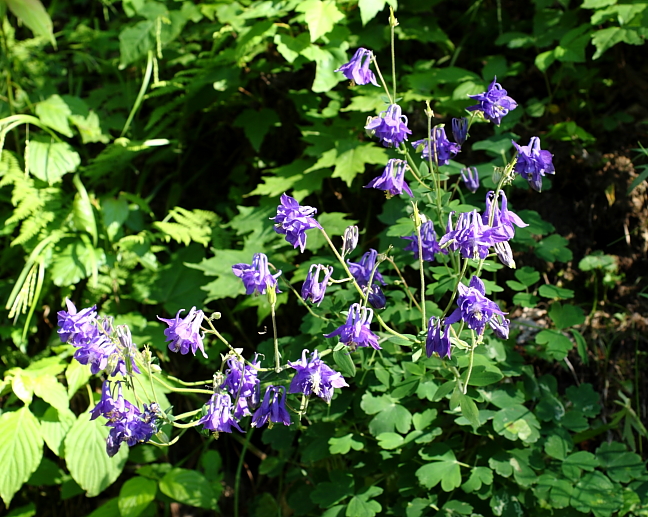
first clump of columbine I found driving down flat rock road (lots of rocks on this road, but oddly enough many of them are pretty round! :rollhappy: and very large when it's been raining )
)
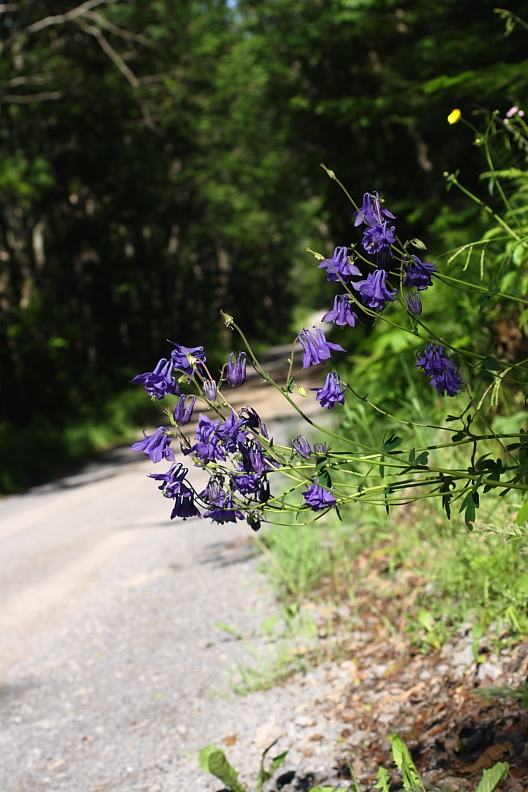
a 'roadside' view of the first clump, growing right out into the roadway
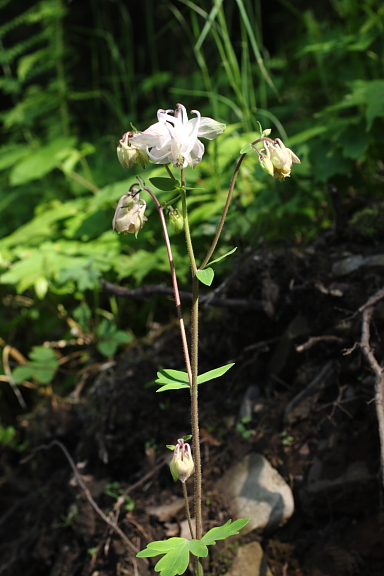
first white clump I saw
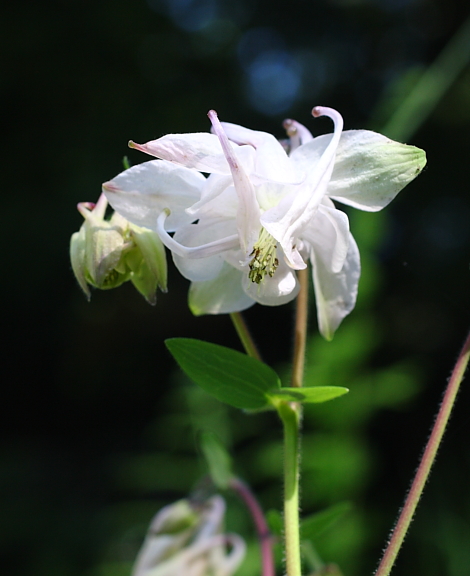
closeup, flowers a little spent
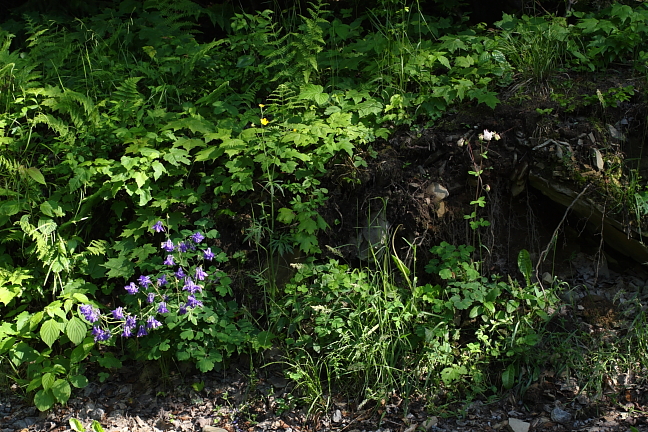
typical presentation growing right in the edge of the road
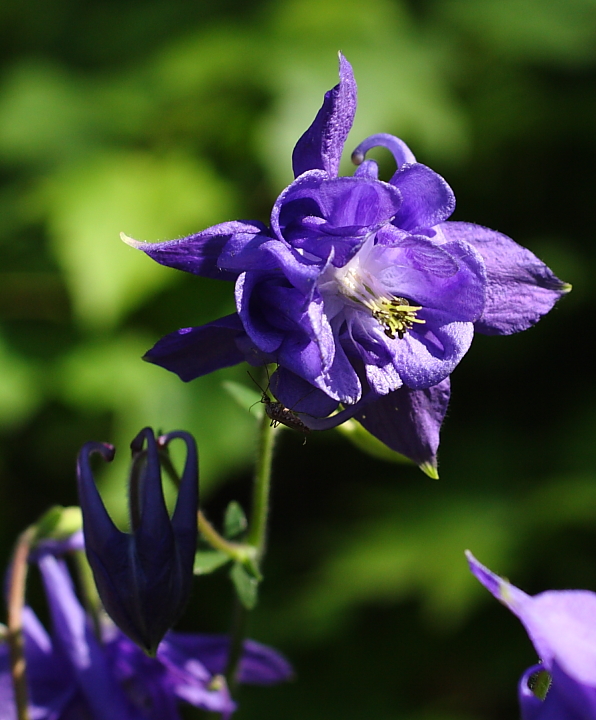
closeup of the blue flowers. I didn't see the mosquito when I took the picture; surprised it wasn't trying to attack me like all of it's brothers (these were all very quick pictures...)
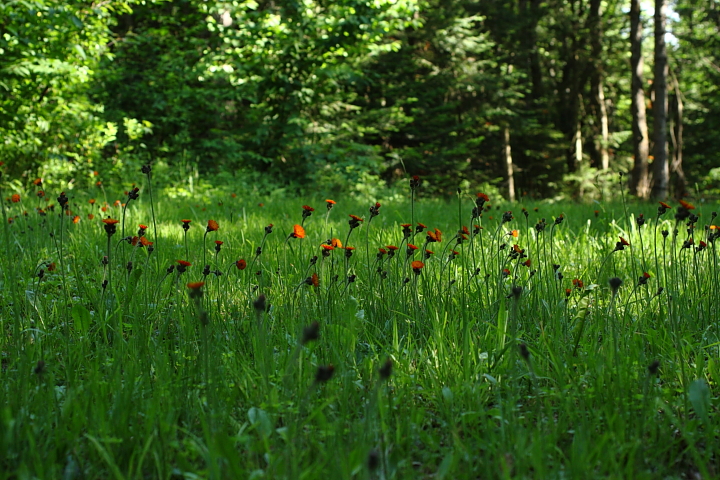
a cleared spot where someone likely will build a hunting camp
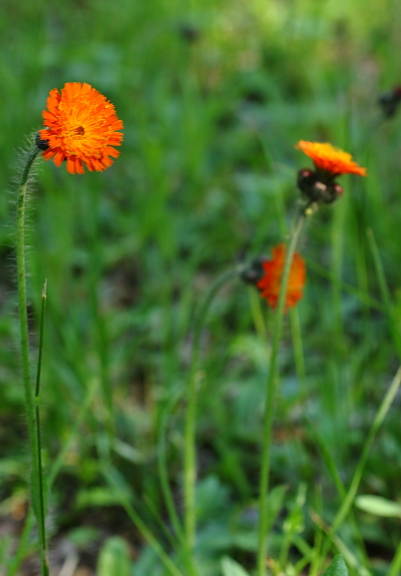
closeup of one of the flowers (a little shaky). I don't remember the common name of these flowers, feel free to volunteer the name! indian paintbrush comes to mind, but don't think that's the name. I think the blue flowers are aquilegia vulgaris but don't know if the white and purple ones are a different variety or not. most likely they are escapes from farms that people tried to carve out of the wet areas. I think the so-called mini-ice age maybe in the 1800's where it was cold for much of the summer for a few years drove many farmers from marginal land all across central upstate ny. a lot of ny state land is from abandoned farms. luckily for those of us who like to find wildflowers, these state lands often are filled with them
there'll be more pictures in another post...

first clump of columbine I found driving down flat rock road (lots of rocks on this road, but oddly enough many of them are pretty round! :rollhappy: and very large when it's been raining

a 'roadside' view of the first clump, growing right out into the roadway

first white clump I saw

closeup, flowers a little spent

typical presentation growing right in the edge of the road

closeup of the blue flowers. I didn't see the mosquito when I took the picture; surprised it wasn't trying to attack me like all of it's brothers (these were all very quick pictures...)

a cleared spot where someone likely will build a hunting camp

closeup of one of the flowers (a little shaky). I don't remember the common name of these flowers, feel free to volunteer the name! indian paintbrush comes to mind, but don't think that's the name. I think the blue flowers are aquilegia vulgaris but don't know if the white and purple ones are a different variety or not. most likely they are escapes from farms that people tried to carve out of the wet areas. I think the so-called mini-ice age maybe in the 1800's where it was cold for much of the summer for a few years drove many farmers from marginal land all across central upstate ny. a lot of ny state land is from abandoned farms. luckily for those of us who like to find wildflowers, these state lands often are filled with them
there'll be more pictures in another post...




